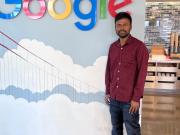
In its undertaking to develop an ecosystem of artificial intelligence technologies, Google wants nothing more than a system that is not far from what humans can do. Google has revealed that it has sought to come up with AI technologies with human race at the centre of this advancement.
On Monday, Google launched its new initiative People + AI Research (PAIR) whose aim is to examine and reshape the ways humans interrelate with artificial intelligence systems. With PAIR, Google targets to put human considerations at the forefront of its machine learning efforts.
"The goal of PAIR is to focus on the human side of AI: the relationship between users and technology, the new applications it enables, and how to make it broadly inclusive," writes Martin Wattenberg and Fernanda Viégas, senior staff research scientists at Google Brain Team.
The initiative is a collaborative effort of researchers at the company, but Google is also releasing open source tools so researchers and experts outside the firm are able to contribute. The PAIR initiative has been materialised in response to Google's long-term objective to make artificial intelligence lean more on human's advantage.
Google laid down the framework of the initiative with three key factors to consider at hand. First, how can it ease out the process for engineers and researchers? Second, how can practising professionals use it at work? Third, how can everyday users benefit from it?
Google said it does not have the answer yet, hence the initiative has been instituted. Nevertheless, it pins down what it called "design thinking" as one piece of the puzzle. "Instead of viewing AI purely as a technology, what if we imagine it as a material to design with?" notes the scientists.
In the meantime, Google released two visualisation tools for AI engineers outside the company to study and level off with the initiative. Wattenberg and Viégas said they acknowledge that they were not the first to dip into the AI world, but it inspires them all the more to work together for the same vision.
"Focusing on the human element in AI brings new possibilities into view. We're excited to work together to invent and explore what's possible," says Wattenberg and Viégas.









